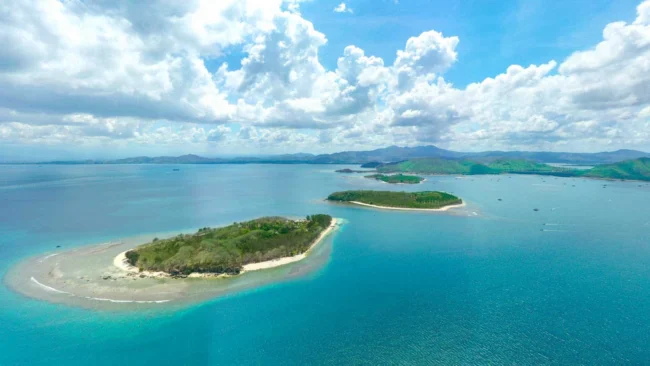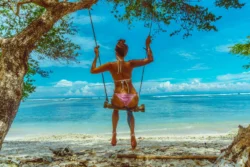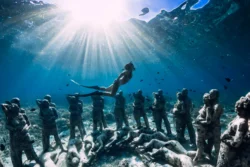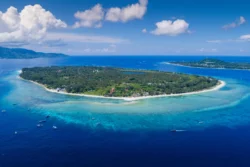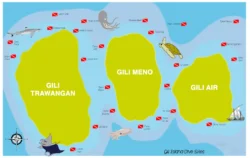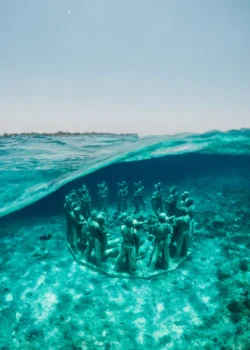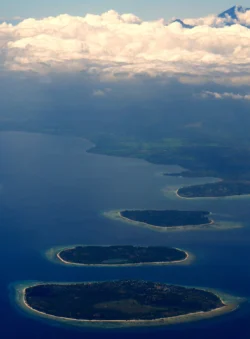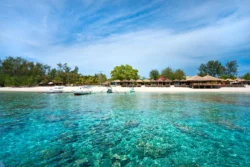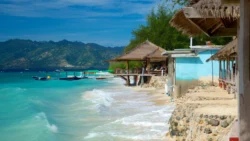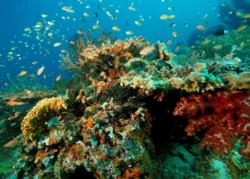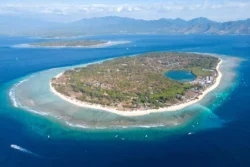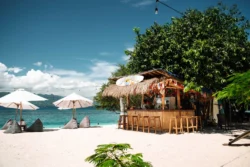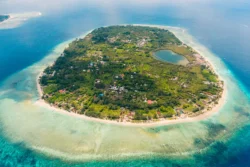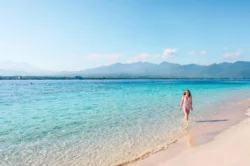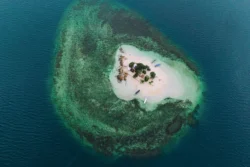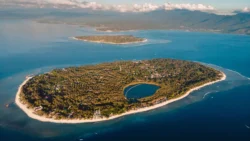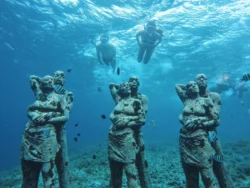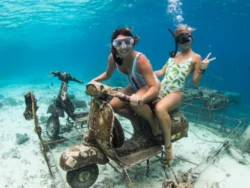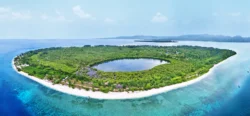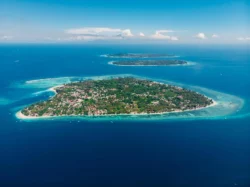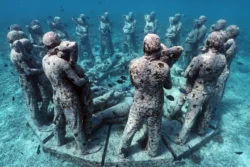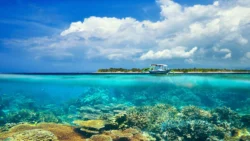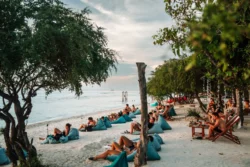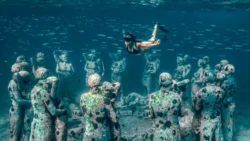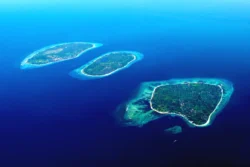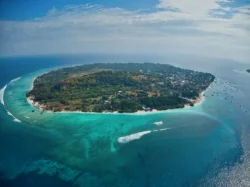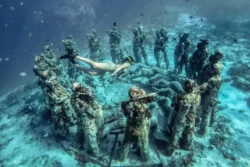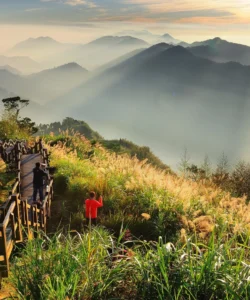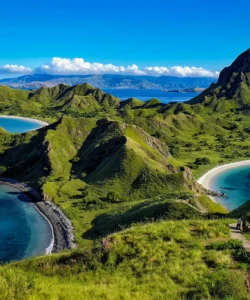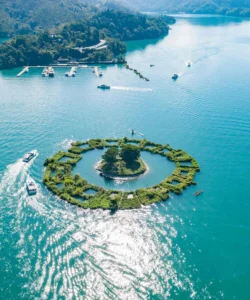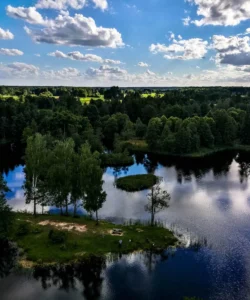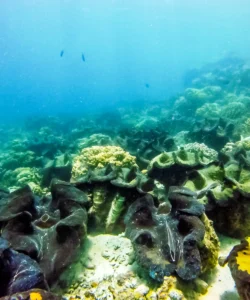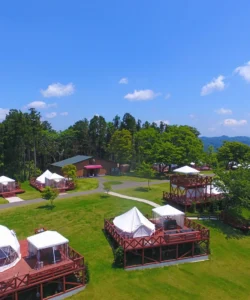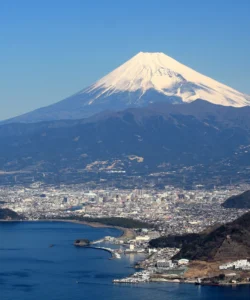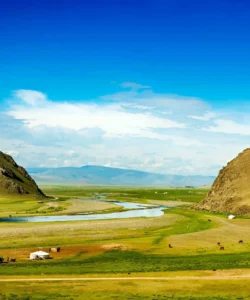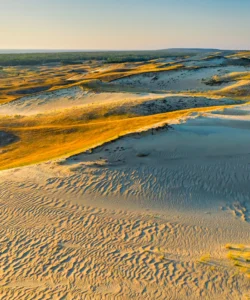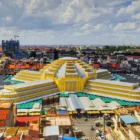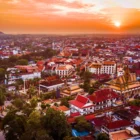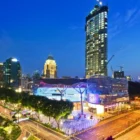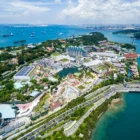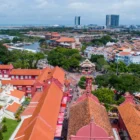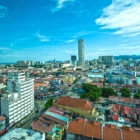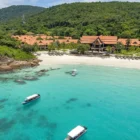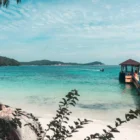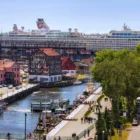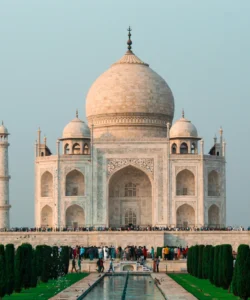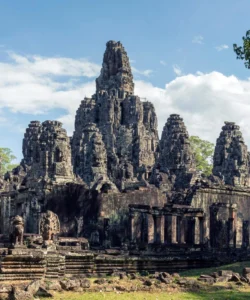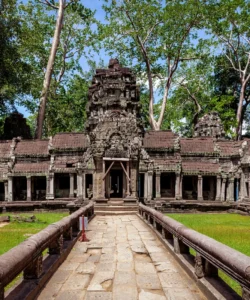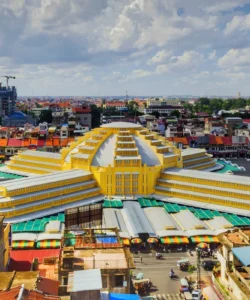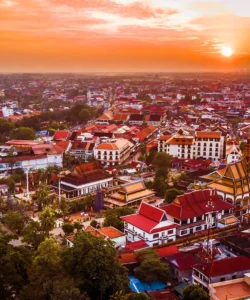The Gili Islands are a trio of tiny, idyllic islands off the northwest coast of Lombok, Indonesia. Famed for their pristine white-sand beaches, crystal-clear turquoise waters, and abundant marine life, they offer a car-free, laid-back paradise that has become a popular escape for travelers seeking relaxation and aquatic adventure.
Name: Gili Islands (Indonesian: Tiga Gili – “Three Gilis”, or Kepulauan Gili – “Gili Islands”). The three main islands are:
- Gili Trawangan (Gili T): The largest and most developed, known for its lively nightlife and diverse accommodation options.
- Gili Meno: The smallest and quietest, ideal for honeymooners, couples, and those seeking ultimate tranquility.
- Gili Air: A blend of the other two, offering a laid-back atmosphere with a good mix of restaurants and activities, and a local community feel.
Address: The Gili Islands are located in the Lombok Strait, just off the northwest coast of Lombok, Indonesia. The closest mainland port on Lombok is Bangsal. Most travelers arrive via fast boat from Bali or Lombok.
How to Get There:
Accessing the Gili Islands involves a boat transfer, as there are no airports on the islands themselves.
- From Bali (Most Common International Gateway):
- Fast Boat: This is the most popular and efficient way. Fast boats depart daily from various ports in Bali, including Padang Bai (most common, approx. 1.5-2 hours) and Serangan (near Sanur, approx. 2-3 hours). Tickets can be booked online or through travel agents in Bali and often include hotel pick-up.
- Fly to Lombok then Boat: Fly from Bali (Denpasar – DPS) to Lombok International Airport (LOP) (approx. 30-minute flight). From Lombok Airport, take a taxi or pre-arranged transfer (approx. 1.5 hours) to Bangsal Harbor (North Lombok), then a public boat or speedboat to your chosen Gili Island (approx. 15-25 minutes). This option is good for those who are easily seasick or want to explore Lombok first.
- From Lombok (Closer Proximity):
- From Bangsal Harbor: Public boats (slow boats) are the cheapest option, departing frequently (often when full) and taking about 15-25 minutes. Speedboats are faster and more direct.
- From Teluk Nara/Teluk Kodek: These are private harbors north of Bangsal, often used by private speedboats for direct transfers.
- Between the Gili Islands (Island Hopping):
- Public Island Hopper Boats: Scheduled public boats run between the three islands twice a day, offering a very affordable way to travel.
- Private Speedboats: Available for hire for more flexibility in departure times.
- Marine Park Conservation Fee: A small marine park conservation fee is typically required upon arrival or departure from the islands, contributing to the protection of the surrounding marine ecosystem.
Landscape and Architecture:
The Gili Islands are a picture of tropical paradise, characterized by their pristine natural beauty and a deliberate lack of large-scale development.
- Coral Atolls and Flat Terrain: Unlike many volcanic Indonesian islands, the Gilis are low-lying, flat coral atolls, meaning they lack significant hills or mountains (Gili Trawangan has a small hill with a viewpoint). Their highest elevation is only about 60 meters.
- Pristine White-Sand Beaches: All three islands are fringed with soft, powdery white-sand beaches that gently slope into remarkably clear, warm, turquoise waters. The clarity of the water is exceptional, making it ideal for snorkeling and swimming directly from the shore.
- Lush Interior: Despite their small size, the islands have a lush interior with coconut palm groves, tropical vegetation, and some patches of secondary forest. Gili Air is particularly known for its freshwater springs, unique among the Gilis.
- Vibrant Coral Reefs: The islands are surrounded by a thriving coral reef ecosystem, part of the National Marine Park. These reefs are bursting with colorful hard and soft corals and an incredible diversity of marine life.
- No Motorized Vehicles: A defining and famous characteristic of the Gili Islands is the complete absence of motorized vehicles (cars and motorbikes). Transport on the islands is by foot, bicycle, or horse-drawn carts known as “cidomos.” This ban contributes significantly to the islands’ peaceful, unpolluted, and tranquil atmosphere.
- Simple, Eco-Friendly Accommodation: The “architecture” on the islands is largely low-rise and designed to blend with the natural environment. You’ll find a mix of rustic beach bungalows, simple wooden chalets, open-air restaurants and bars, and a growing number of stylish eco-resorts built with natural materials like bamboo, wood, and thatch (“alang-alang” roofs). There are no high-rise buildings or major international hotel chains, preserving the authentic island charm.
- Sunset Swings and Sea Hammocks: A popular, whimsical “architectural” feature found along the west coasts of Gili Trawangan and Gili Air are the “sunset swings” and hammocks placed in the shallow waters, providing iconic photo opportunities against the stunning sunsets.
- Underwater Sculptures: On Gili Meno, British artist Jason deCaires Taylor’s “Nest” (a circle of 48 life-size human figures) creates a unique underwater “architectural” attraction for snorkelers and divers.
What Makes It Famous:
- Car-Free Paradise: The absence of motorized vehicles is a defining and beloved feature, creating a unique, tranquil atmosphere where the primary sounds are bicycle bells, horse hooves, and the ocean.
- Exceptional Snorkeling and Diving: The Gilis are a world-renowned destination for snorkeling and scuba diving. Their crystal-clear waters, vibrant coral reefs, and abundant marine life (including frequent sightings of sea turtles, blacktip reef sharks, and countless colorful fish) make them a top choice for underwater exploration, and a popular place to get dive certifications.
- Three Distinct Vibes: The islands’ individual personalities cater to different traveler preferences: Gili Trawangan for nightlife and socializers, Gili Meno for quiet romance and tranquility, and Gili Air as a balanced blend of both, ensuring there’s a “Gili” for everyone.
- Pristine Beaches and Turquoise Water: Their postcard-perfect beaches with soft white sand and incredibly clear, calm, warm waters are a major draw for relaxation, swimming, and sunbathing.
- Turtle Haven: The waters around the Gilis are known for their healthy population of sea turtles (both green and hawksbill), and it’s very common to encounter them while snorkeling or diving, making it a “turtle capital.”
- Laid-Back, Unspoiled Vibe: Despite their popularity, the Gilis maintain a very relaxed, unhurried pace of life. This “island time” philosophy is a key part of their charm, encouraging visitors to disconnect and unwind.
- Stunning Sunsets: The west coasts of all three islands offer spectacular sunset views over the ocean, often with Lombok’s Mount Rinjani or Bali’s Mount Agung visible in the distance on clear days.
Differences from Some Other Wonders:
- No Motorized Vehicles: This is the most significant differentiator from virtually all other popular island destinations or wonders, creating a uniquely peaceful and low-impact environment.
- Small, Flat Coral Islands: Unlike larger, often volcanic islands (like Bali, Lombok, or the Raja Ampat Islands), the Gilis are small, low-lying coral formations. This contributes to their walkability and distinct flat landscape.
- Inter-Island Accessibility by Small Boats: The close proximity of the three islands and the ease of hopping between them on small local boats (“island hoppers”) creates a unique multi-island experience within a very short distance.
- Focus on Marine Life and Beach Relaxation: While other Indonesian islands might offer volcanoes, rice terraces, or ancient temples, the Gilis are almost entirely centered around their marine environment (diving/snorkeling) and pristine beach relaxation, with minimal other major land-based attractions or cultural sites (beyond local village life).
- More “Backpacker to Mid-Range” Vibe (historically): While all types of accommodation exist, the Gilis, particularly Gili Trawangan, historically attracted a strong backpacker crowd, offering a more casual and budget-friendly experience compared to some of the more upscale, integrated resorts found elsewhere (e.g., Redang Island’s focus on resorts).
- Underwater Art: The unique addition of man-made underwater sculptures (“Nest” on Gili Meno) adds a contemporary artistic element to the marine landscape that is distinct.
Gili Islands Photos:
